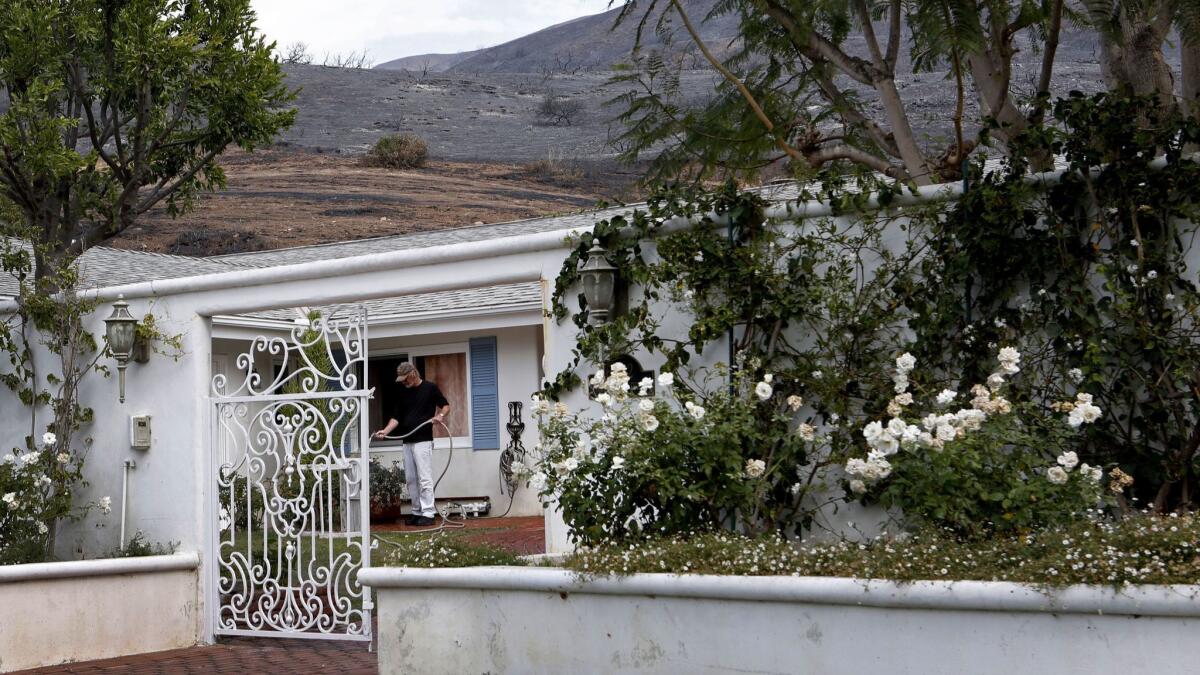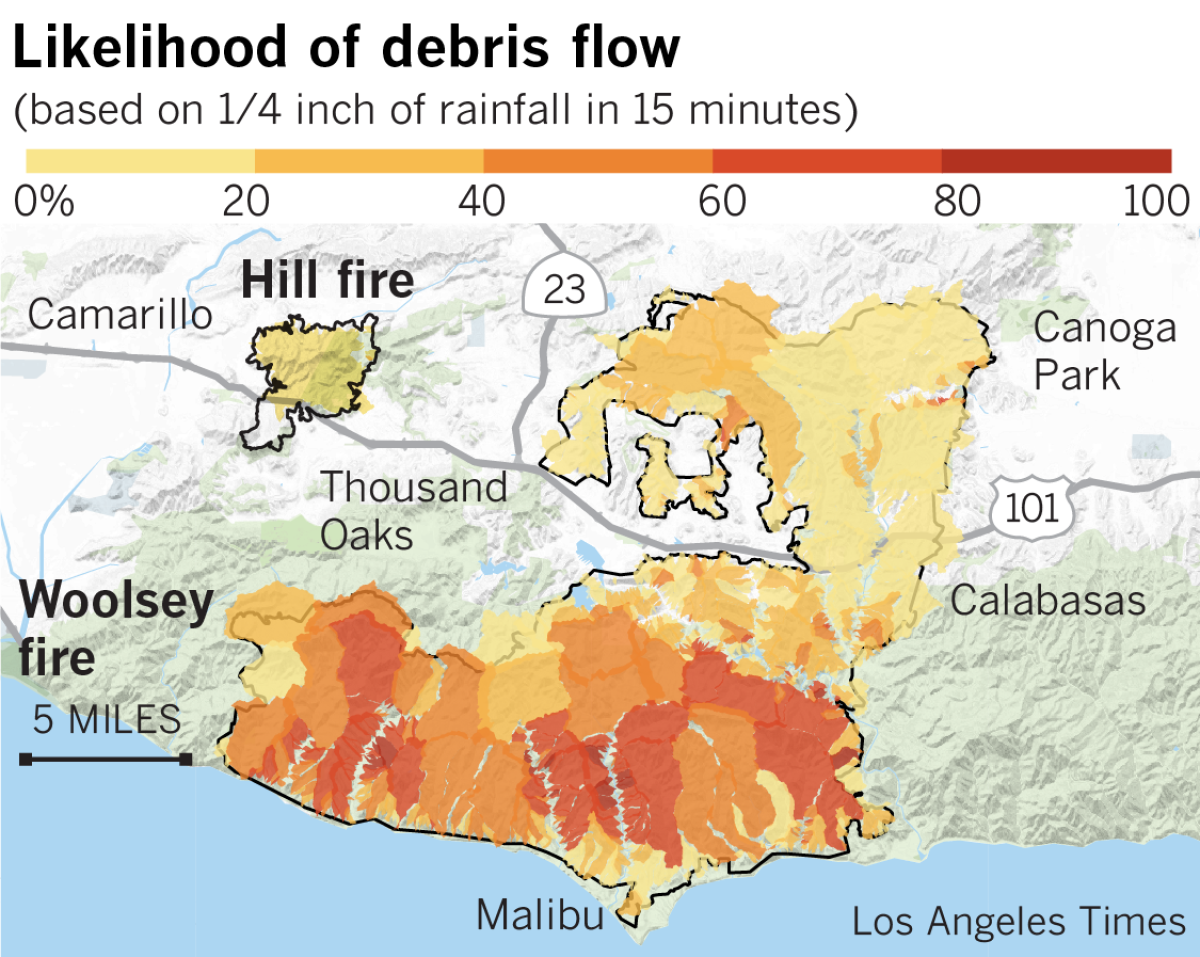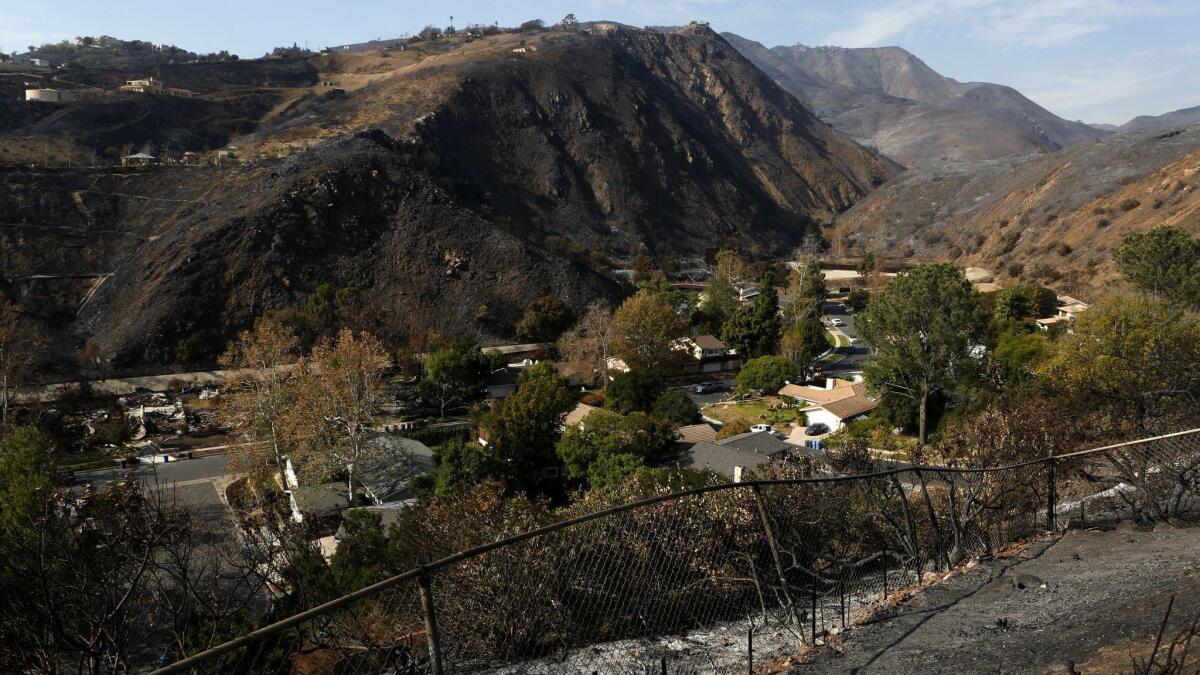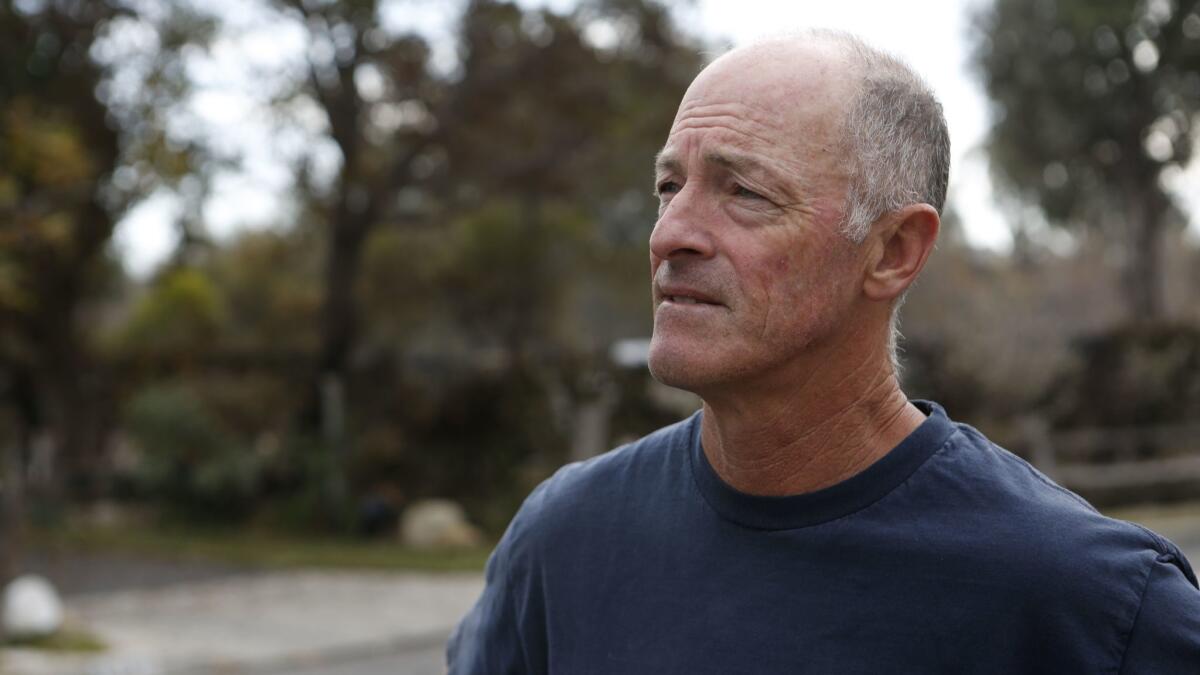Rainy season brings mudslide danger to Southern California’s fire-ravaged neighborhoods

It didn’t take long for Don Fauntleroy’s relief to be overtaken by dread. After surviving the flames, his home is in danger again, this time from the rains.
Like others across the 100,000-acre Woolsey fire burn area, the 65-year-old cinematographer has been rushing to fortify his Malibu property against what could come rushing down from the steep, charred hillside above.
The fire has put Fauntleroy’s home near the mouth of Trancas Canyon at high risk of debris flow, and he fears heavy rain could unleash a slurry of mud and rock to destroy what the wildfire spared.
“You can see where the mud’s going to come down,” he said from the backyard of his white ranch-style house. “It’s just a disaster waiting to happen.”
The first rain to fall over the burn-scarred area is expected to start Wednesday night. Forecasters are predicting it will be a weak storm, not intense enough to trigger significant flows of mud and debris — although it could cause some minor rock- and mudslides.
But experts say stronger storms in the coming months have the potential to send life-threatening mudflows plowing through neighborhoods. That threat has authorities urging residents living on or below hillsides, in canyons and stream channels to take steps to prepare their homes, keep an eye on the weather, quickly heed warnings and evacuation orders, and be ready to leave well before the rain arrives.

“If you can see burned hillsides from your house, you are threatened by debris flow,” said National Weather Service meteorologist Eric Boldt, who works with emergency planners and other local officials to coordinate warnings. “You don’t want to be there when the rain starts. There’s just not enough time to wait and see what happens.”
In December 2014, heavy rain sent mud and rock streaming into homes in Camarillo Springs more than a year after the Springs fire tore across the Santa Monica Mountains. Then in January, a mudslide devastated Montecito, killing at least 21 people and destroying more than 100 homes a month after the massive Thomas fire.
During a typical rainstorm, large areas of the Santa Monica Mountains burned by the Woolsey fire would have at least a 60% probability of generating debris flow, according to preliminary maps released Monday by the U.S. Geological Survey.
In some of the most susceptible locations along steep slopes, canyons and drainages, the likelihood of debris flow would be in the range of 80% to 100%, according to estimates by government scientists that were fast-tracked in recent days in anticipation of rain.
The mudslide threat will persist for at least the next two years while the landscape recovers. Until then, the denuded, water-repelling conditions created by the fire mean that enough rain will have the potential to generate powerful and fast-moving flows that can carry rocks, boulders, trees and vegetation, bury homes and roads and kill people in their path.

Los Angeles County officials said hundreds of maintenance workers were clearing out debris basins, storm drains and other flood control infrastructure in the burn area. Meanwhile, teams of engineers were going door to door advising homeowners in at-risk areas of immediate steps they could take to protect their property from mudflow damage, such as putting out sandbags or retaining walls.
“We don’t know if that first major storm that’s going to be catastrophic is going to be next week,” said Chris Stone, an assistant deputy director for the L.A. County Department of Public Works. “It’s quite likely that there is going to be at least one big storm this year or in the next few years that can cause havoc, and they need to be prepared for that.”
Mountain areas of Southern California have some of the highest mudslide risk in the nation as a result of frequent wildfires, steep terrain and lots of people living nearby. Experts say the parts of the Santa Monica Mountains scorched by the Woolsey fire have a history of producing destructive mudslides when hit with heavy rains.
“We know debris flows have happened there in the past, with and without fire,” said Jason Kean, research hydrologist for the USGS Landslide Hazards Program, who has been assessing the post-fire debris flow risk in the Woolsey fire burn area. “It’s really just down to if intense rain hits the burn area.”
Half an inch of rainfall in an hour is enough to trigger serious mud and debris flows, according to thresholds used by the USGS and National Weather Service — a rate easily surpassed in a run-of-the-mill winter storm.
The mudslide threat each community faces is also a function of how severely the fire burned and where the neighborhood sits in relation to steep slopes.
The recently generated USGS maps that identify the parts of the Woolsey fire burn area most susceptible to debris flow are based on a typical rainstorm that drops about a quarter of an inch of rain in 15 minutes. They were generated by comparing satellite imagery before and after the fire to estimate soil burn severity.
But the faster the rain falls over those areas, the greater the risk of catastrophe. Forecasters and emergency planners are most concerned about downpours more than twice that threshold.
“It’s when you hear the rain thumping against the roof, or the car windshield wipers are going full blast and you still can’t see,” Boldt said. “That’s the kind of intense rain that causes these issues. It’s not 10 hours of steady rain, it’s 15 minutes of heavy downpour.”

The Montecito disaster has served as a lesson for some back in the Trancas Canyon area of Malibu, where residents say avoiding a similar tragedy is at the top of their minds as they make evacuation plans.
“That incident happening is going to save lives here,” said Steve Hochkiss, 57, a landscape contractor and ocean lifeguard. His home was unharmed by the fire that destroyed the house next door, the one across the street and many others in his neighborhood at the mouth of a steep canyon authorities have identified as being at high risk of mudflows.
With the rainy season afoot, Hotchkiss is taking the mudslide threat seriously and telling his neighbors to do the same.
“We’ll be vigilant. And if there’s heavy rain, we’re getting out,” he said. “You can’t stay and fight the mud. It’s just as scary as fire, if not more so.”
More to Read
Sign up for Essential California
The most important California stories and recommendations in your inbox every morning.
You may occasionally receive promotional content from the Los Angeles Times.











